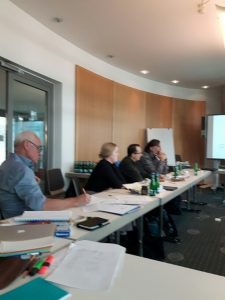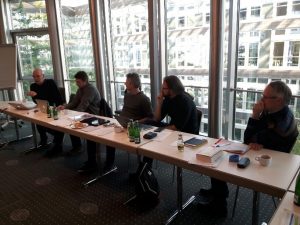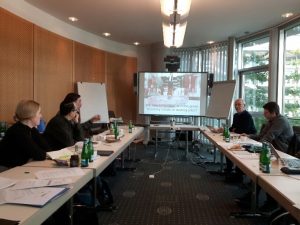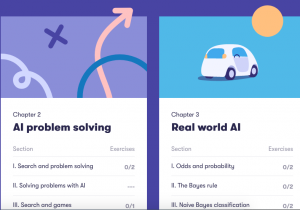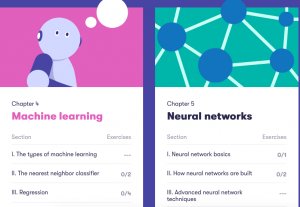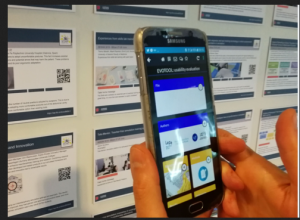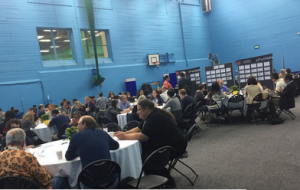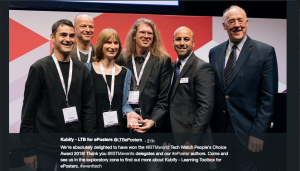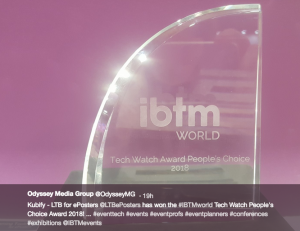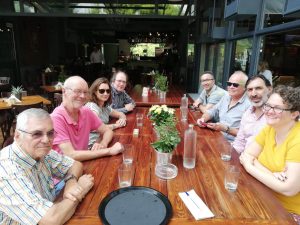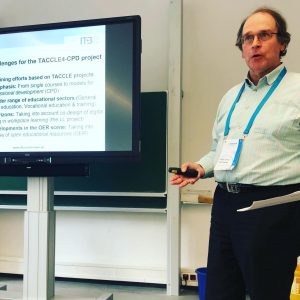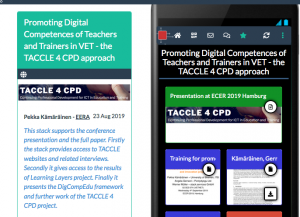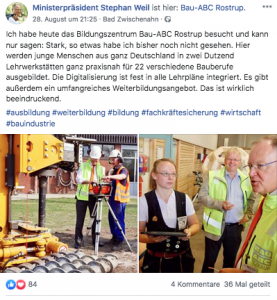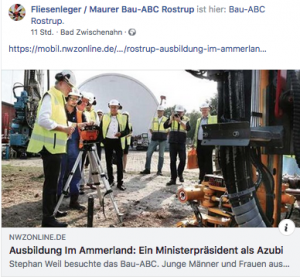Visiting the “Artificial Intelligence (AI) and Vocational Education and Training (VET)” project
At the end of the week I had a chance to give a guest input at the kick-off meeting of the new Erasmus Plus project “Artificial Intelligence (AI) and Vocational Education and Training (VET)”. The project is coordinated by our institute – Institut Technik & Bildung (ITB), University of Bremen – and in person by my colleague Ludger Deitmer. The partners come from Greece, Italy, Lithuania and the United Kingdom/Wales. All partners are known to us from previous European cooperation activities, so the project team was in a good position to have a rapid start. My role as a visitor was to give an overview of some predecessor projects and their recent/ongoing work. In addition I had a surprise input to deliver on top of my presentation. (This time I didn’t need to travel elsewhere, since the meeting took place at ITB.)
Looking at the work of earlier and parallel projects
As I mentioned above, the partners were all old acquaintances to ITB, but they had not all been working in the same projects for promoting digital competences. Therefore, Ludger asked to give a presentation of the immediate predecessor projects – the TACCLE projects and the Learning Layers project and their achievements. In particular the point of interest was, how these projects have contributed to training of teachers and trainers regarding digital competences. For this purpose I could use my presentation that I had given when visiting the recent meeting of the TACCLE VET project in Athens.)
In my presentation I gave brief historical overview on the development of TACCLE projects, starting with the shaping of a generic e-learning handbook for teachers (TACCLE1), in shaping a differentiated set of online handbooks for selected subject areas (TACCLE2) and then shaping online resources for teachers who teach coding and programming in primary education (TACCLE3). Whilst these projects were directly addressing particular teacher groups, the ongoing TACCLE4-CPD has the task to analyse and develop models for continuing professional development (CPD) for different educational sectors – including general education, adult education and vocational education and training (VET). From the perspective of VET and workplace learning I added to the picture the work of the Learning Layers project, in particular the shaping of the Learning Toolbox (as a digital toolset to support work process -oriented learning).
Based on the overview I drew attention to several points with which I am currently working in the TACCLE4-CPD project:
- Policy analyses that draw attention to measures and initiatives to promote digital competences of teachers and trainers in VET (at schools, training centres and work organisations);
- The role of the European DigCompEdu framework and the adapted TACCLE Routemap as support for CPD;
- The need to pay attention to digitization in education/training contexts and to digital transformation in working life;
- The impulses that are given by particular exemplary projects for specific ‘innovation paths’;
- Revisiting the “Theme Room training” that was piloted in the Learning Layers project with the training centre Bau-ABC (in North Germany).
We had a lively discussion and then I left the project team to continue its planning of the work to be carried out during the working period that had just started. (Below some photos of the previous session that I observed.)
My special input: the citizens’ course in Artificial Intelligence in Finland
As I mentioned above, we had a lively discussion after my presentation. Yet, it was not so much about the predecessor project or on the points with which I am currently working. The partners who have been working in the said projects (and attended the recent Athens meeting ), had already become familiar with these contents. To others, these were new impulses. However, I had also a special input that was immediately interesting and relevant for all participants.
On the same morning I had listened to the German radio channel Deutschlandfunk and its program “Europa heute”. At the end they had a special report from Finland – presenting a course on Artificial Intelligence that had been designed for a wide audience. (See the transcript of the report “Digital-Vorreiter Finnland: Künstliche Intelligenz fürs Volk“.)
I then visited the website of the course “The Elements of AI“, designed by the University of Helsinki and the special agency Reaktor. And in the meeting we then had a closer look, what kind of civic knowledge the course delivers for wide audiences. These impressions triggered a lot of thoughts and comments. (Below some screenshots on different chapters of the course.)
—
I guess this is enough of my visit and of my guest input. I was happy to share some information on past/parallel projects and to provide an interesting example of a an ongoing online course that is reaching wide audiences in my home country. We will follow, how this course is being developed in the coming times.
More blogs to come …
